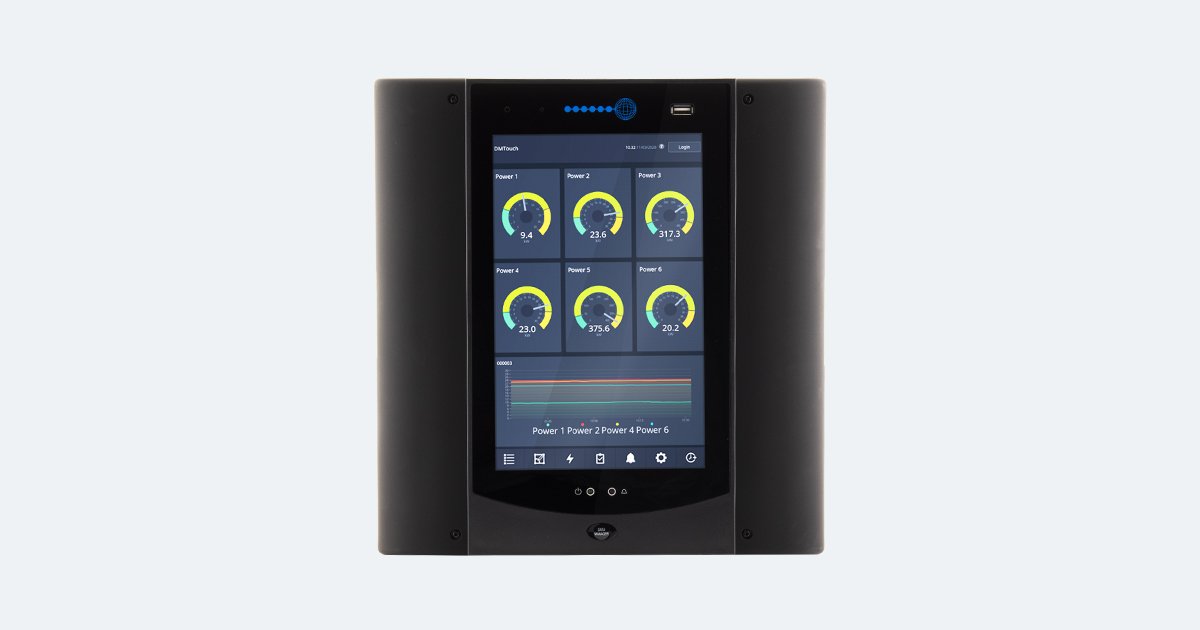Resource Data Management (RDM) are pleased to introduce software version 4.1 for the DMTouch and miniDM, RDM’s control and monitoring systems front-end. Software v4.1 introduces a host of new features and upgrades, improving functionality and ease of use.
The DMTouchis RDM’s market-leading control and monitoring system front-end, designed for applications within the HVAC and refrigeration control industries. Applications include supermarkets, retail stores, offices, gyms, and more. Based on open protocols, the DMTouch allows for easy integration of an existing third-party infrastructure. Energy management tools, remote and onsite access options, and extensive control capabilities of the DMTouch helps businesses meet their control requirements and minimise costs for their HVACR infrastructure.
The miniDM was specially developed with small format businesses in mind. Convenience stores, pharmacies and restaurants benefit from the compact, cost-effective control system front-end that can manage up to 32 independent devices. Modelled on the DMTouch, it can also be accessed remotely, features the same PLC capabilities of the DMTouch, and helps businesses perfect their control and monitoring strategy.
KEY SOFTWARE 4.1 FEATURES AT A GLANCE
- New miniDM LCD display support: users can now navigate through the menu directly on the miniDM’s screen
- New Modbus test tool: allows users to quickly verify successful communication to a Modbus device
- Enhancement to Modbus IP port identification: increases the flexibility of the front-end when integrating third-party devices
- New TDB editor feature: RDM’s PLC editor software is now even easier to use
- New local I/O input setup: increases monitoring capabilities of third-party sensors
miniDM LCD Display Support
Following the update, a number of useful display menus can be accessed directly on the miniDM’s screen, reducing time and equipment needed to view system information or navigate key settings. A range of information can now be viewed within seconds, including the total number of devices connected to the miniDM and their status, providing a quick overview for the user. Alarm information can also be accessed, showing details on the type of alarm and the time it occurred. A number of settings can also be updated via the built-in push buttons and screen. To prevent unauthorised changes, a timeframe for the changes has to be set first via a laptop or PC. To save energy, the screen will turn off automatically after a set time has expired.
New Modbus Test Tool
The new Modbus test tool enables the creation of a test register which the miniDM and DMTouch can use to interrogate a connected Modbus device. Users can now easily verify successful communication to a Modbus device. This new feature greatly reduces the time it takes to confirm a connection, facilitating the process of network fault finding or in the creation of a user generated Modbus template.
Upgraded Modbus IP Port Identification
This upgrade improves the flexibility of RDM’s control systems front-end and facilitates the connection to more third-party Modbus devices. Both the DMTouch and miniDM can now communicate with Modbus devices which utilise a port number that is different from the default Modbus port number; 502.
New TDB Editor Feature
RDM’s programmable logic controller (PLC) software TDB is highly flexible and can easily be configured to meet precise control requirements. TDB is available for both the DMTouch and miniDM with the software license lasting for the lifetime of the device and a free, standalone desktop editor available. Following the software version 4.1 update, it is now even faster and easier to add customised options for parameter selection.
New Local I/O Input Setup
The option to specify the unit ppm, when configuring a local input on the DMTouch, has been introduced. This change allows greater flexibility and monitoring of third-party sensors for applications such as refrigerant gas leak detection or room air quality.
